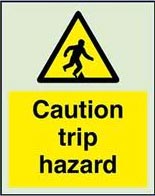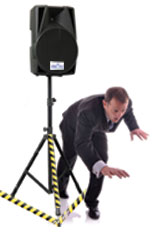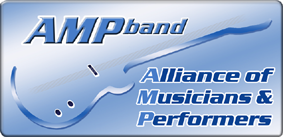Health & Safety Advice
 We live in a world of ever increasing claim awareness and
have developed quite a cynical blame culture in the UK. However,
just because someone hurts themselves (or even claims they have),
does not necessarily mean that liability will attach and, even if it
does, the injured party bears no responsibility themselves.
Therefore, in order to protect ourselves we simply need to make sure
that we have taken all reasonable steps to prevent accidents
occurring due to negligence.
We live in a world of ever increasing claim awareness and
have developed quite a cynical blame culture in the UK. However,
just because someone hurts themselves (or even claims they have),
does not necessarily mean that liability will attach and, even if it
does, the injured party bears no responsibility themselves.
Therefore, in order to protect ourselves we simply need to make sure
that we have taken all reasonable steps to prevent accidents
occurring due to negligence.
Negligence is the key word. The
injured party would need to show to a court that the accident was
foreseeable and preventable and that the band or act failed in their
duty to protect the public. Such failure only extends to what is
reasonable so, if you ensure that you follow simple procedures you
should be fine and any case against you would be defendable.
Planning safe entry and exit from a building and setting up
equipment in a way so as to minimise the risk of incident is like
playing a game of chess; you have to constantly think ahead, you
need to think what might happen and what other people might say
happened or even what people might make happen.
Also, don’t forget that in our
industry we are dealing with people who have been drinking and might
not take their own safety as seriously as they would if they were
sober. They also have a reduced sense of danger when influenced by
drink.
Location of Set Up
Check your
location does not interfere with fire exit routes. Ensure there are
electrical sockets adjacent to your allocated space. If cables need
to be run from power points to the rig, look for the safest route.
Carrying In
Do not use people who are
not part of the crew to assist in any way. Avoid loading and
unloading if the venue is still fully occupied. Ensure that when
setting up and dismantling, care is taken not to walk through crowds
or push past people who may fall, particularly after events where
alcohol has been consumed. Wherever possible, ensure that equipment
is taken through a separate exit door away from the public.
Setting Up
If setting up on a stage make
sure the way on and off the stage is clear because no matter how
many times you ask people not to come onto the stage, they will.
Don't set up too close to the front of the stage else it presents a
handy aid for people to haul themselves up.
When
setting up at floor level block one end off if possible, utilising
this closed end for trailing cables. Try to intercept people from
entering your working area. Although you may take every precaution
to prevent people coming onto the perfromance area, a court might
decide that it is foreseeable that someone could, and thus is the
responsibility of the act. Keep the working area clear of boxes,
transit cases, loose cables etc at all times for your own safety
too!
Never leave your equipment unattended at a venue. If
anyone, especially a curious child, was to injure themselves on the
equipment, the onus would be on the act.
If you have a road
crew helping you to set-up, still check for potential risks yourself
regardless of how much you might trust them to work conscientiously
and safely.
Stands/Tripods
 Positioning the legs is difficult to keep them out of the way where
public might walk. If this is unavoidable then attempts should be
made to make the stand legs as visible as possible by using high
visibility tape or even dressing them with LED starcloths or some
kind of architectural lighting to draw attention to them.
Positioning the legs is difficult to keep them out of the way where
public might walk. If this is unavoidable then attempts should be
made to make the stand legs as visible as possible by using high
visibility tape or even dressing them with LED starcloths or some
kind of architectural lighting to draw attention to them.
Legs
should be opened to a sufficient width to make them stable and the
actual stand not taken too high so that it becomes top heavy. It is
an idea to test the stability of a loaded stand under a controlled
environment by tilting it to approximately 25 degrees to see if it
rights itself again when let go.
Lighting
Lights and other items mounted on gantries, trussing or T
Bars should always be attached using the correct sized clamps and
fitted to the effect using nylon locking nuts. A suitably tested
safety chain or cable should also be attached to a dedicated safety
ring or a suitable point on the actual light (not on the bracket).
If the overhead weight of a gantry or T Bar is uneven always make
sure it is heavier towards the rear of the show away from the
audience so if the stand does go over it will not fall onto the
public and the chances are there will be a wall behind you to break
the fall.
Your lights should be above head height so a
tall person cannot walk into them. Also floor lighting should be
placed in a safe place and the cables stuck down. If using strobe
lights check that no one in the room is epileptic. Even if you get a
jokey response, don't use them!
Special Effects
Bubble machines create a soapy mess on hard floors and creates a
slip hazard. Wherever possible, use on a carpeted area. If a client
insists on it being used on the dance floor, make them aware of the
risks beforehand. There is 'Dry Bubble Fluid' available from both
ACME & Rosco.
Snow & foam machines can also create an ice
rink effect on a dance floor. Use sparingly and when the dance floor
is busy, this prevents the fluid accumulating on the floor.
Acts need to be aware that the PLI cover provided by AMPband
as one of the benefits of membership does not cover the use of
pyrotechnics, explosives or any special effect involving fire or
explosion.
Sound
Check sound levels and maintain them
during performance. Be careful when playing in a venue protected by
a decibel meter. Do not be tempted to circumvent it; you will be put
in a difficult position if someone subsequently claims deafness from
your music.
Cables
Cables are one of
the biggest causes of accidents concerning live
bands. It is popular to use black cables so that they are
inconspicuous, however, this makes them hard to see. Keep cable runs
as short as possible. Make sure all cables are stuck down with a
good tape, preferably along their length rather than across it or
use a rubber cable covers.
Consider buying anti-kink cables so that they lay as
close to the floor as possible without looping up. To this end it is
also advisable to avoid storing cables in a cold place. It is best
to use cables that are the right length for the job rather than have
lots of cable coiled up untidily causing extra trip hazards.
Guitar and microphone cables which cannot be secured for
operational reasons should still be routed where possible in such a
way that they minimise risk of tripping. Consider the use of radio
microphones and transmitters to reduce the risk further.
Electricity
Always use a trip device
such as an RCD breaker and ensure you never draw more than the
amount of current allowed from mains outlets. If an extension lead
is needed it should be fully unwound and the excess cable safely
stowed away.
All electrics must comply with safety
standards [PAT Test]. Make sure you follow a strict program of
interim checking yourself between scheduled tests. Cables must be
secured in a safe manner and try to keep them out of sight. Not having a valid
Portable Appliance Test (PAT) certificate won't automatically invalidate
your PLI cover. However, in the event of a claim, having a valid PAT
certificate would satisfy the insurers that you have taken reasonable
precautions in this regard.
H&S Awareness
If you think an incident could
be prevented by making an announcement then do so clearly and
politely pointing out that it is for their safety. Check evacuation
procedures and relay information if required.
Keep all liquids away from
equipment, including client beverages on top of speakers. All sharp
edges should be filed down smooth or covered with a soft protective
covering.
These may all seem obvious but it's worth having a
closer look at your set up next time you are out.
Performance
Accidents between band members can
happen, especially during lively sets where there is a lot of action
on the stage. Be aware of the possibility as a crack on the head
with a guitar neck is not pleasant!
The PLI provided by
AMPband as a benefit of membership does not cover 'player to
player' or 'player to roadcrew' incidents.
You should also
prevent members of the public from accessing the performance area.
Oops!
Even with all the care in the world accidents
can still happen. If you are in the unfortunate situation where
someone is injured at your gig then, after they have been dealt
with, obtain the names & contact details of any witnesses, take
photographs and make notes. These will help your insurers determine
if a claim is justified or not.
Stay Safe!
We have additional advice for
performing outside here and further advice here for dealing with a claim
made against you
A massive thanks goes to four AMP
members, Andy Lovell, Steve St John, Ian Holmes and Jim Duncan, for
their input on this subject and their words of wisdom.
Back to Ask Dave
